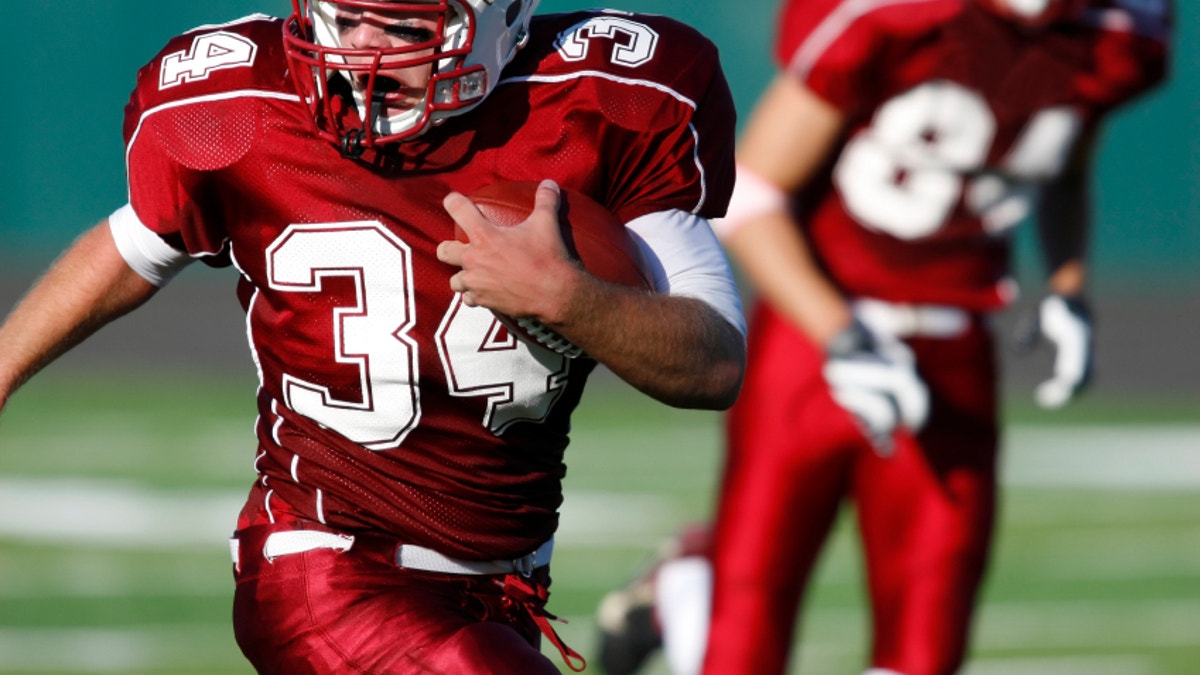
RICHMOND, Va. – Ryan Fitzgerald suffered two concussions in high school that left him with memory loss and problems concentrating. Unable to focus on his schoolwork, he became moody and lashed out at friends.
Ultimately, the lifelong athlete and former baseball player at Landstown High School in Virginia Beach agreed with his doctor that he should no longer play organized sports. The reason: he didn't want to risk further damage to his brain.
Now a first-year student at James Madison University, Fitzgerald is telling other young people that it just isn't worth rushing back out on the field after a head injury. His message is backed up by a new Virginia law that requires all schools to have concussion-management policies.
In workshops across Virginia, Fitzgerald and his mother, Maggie, have spoken about the effects of concussions and why teen athletes shouldn't hide their injuries in order to keep competing. The 18-year-old got one concussion after the lid of his car trunk struck him in the head, and another when he collided with another athlete while running at full speed.
"I just talk about how important it is for the recovery process, for slowly going back into sports," Fitzgerald said.
Thirty-two states have laws addressing student-athlete concussions and several others could eventually follow suit, according to the National Conference of State Legislatures.
Most legislation requires an athlete to leave competition or practice when a concussion is suspected, returning to play only when a doctor or other medical expert consents. Most also require school athletic officials to educate coaches, athletes and parents about concussions.
Sen. Ralph Northam, a pediatric neurologist and primary sponsor of Virginia's legislation, said schools need consistent guidelines on how an athlete should be evaluated and how and when to safely return them to play. He says another benefit of such laws is that they take the pressure off coaches to get athletes back in competition before they are healed.
Concussions occur when the brain jostles inside the skull after a blow to the head, face or neck -- even impact to the body that jars the head. Besides headaches, nausea, memory and sleep problems, those injured could face long-term cognitive and physical disabilities. And the damage can be cumulative after repeated concussions.
Alex Valadka, a spokesman for the American Association of Neurological Surgeons, said a major shift in thinking about concussions is under way, particularly among coaches.
"A big part of this is a change in the culture about concussions as well; if you get a concussion, you can't just shake it off and go back to play," he said.
Increased attention to pro players' brain injuries and the blast injuries to soldiers in combat also have propelled the issue to the forefront for student-athletes, Valadka said.
Virginia's law, which took effect July 1, requires school divisions to develop procedures that address how officials identify and handle suspected concussions. Those include removing players from practice or games and prescribing when they can return. The law also requires students and parents to review educational materials about concussions before athletes can play.
Northam says there are no penalties under law, but schools that violate guidelines would answer to the Department of Education.
Dr. Joel Brenner, director of the sports concussion program at Children's Hospital of the Kings Daughters in Norfolk, is a physician for several southeast Virginia high school and college teams. He helped the state craft guidelines and said eduction is the law's most important component.
The National Federation of State High School Associations is among several groups that offer online courses to help coaches, athletes and parents learn about concussions and manage their treatment.
The federation's assistant director, Bob Colgate, said awareness has spread over the years among states, the NFL, NCAA and youth football leagues after Washington's state legislature adopted its Zackery Lystedt Law in 2009. Named after a teenager who suffered a major brain injury after returning to the football field several plays after taking a hard hit, the law has served as a template for state legislation.
The Lystedt family settled a lawsuit against Washington state's Tacoma School District in 2009 in which the district didn't admit liability. Zackery suffered permanent neurological damage.
About 20 percent of high school football players and 40 percent of college football players will suffer a concussion at some point in their career, according to the American Academy of Pediatrics.
Numerous school districts are using a system called ImPACT, or Immediate Post-Concussion Assessment and Cognitive Testing, which is already deployed by the NFL, Major League Baseball and the National Hockey League.
The tests measure athletes' baseline brain functions at the start of the season by having athletes undergo computer tasks measuring reaction time and memory. After a suspected concussion, athletes retake the tests to determine if any changes occurred in the brain. They are sidelined until their condition improves.
The Virginia Department of Health has led several public workshops this summer for parents, coaches, athletic trainers, physicians, school nurses and administrators.
